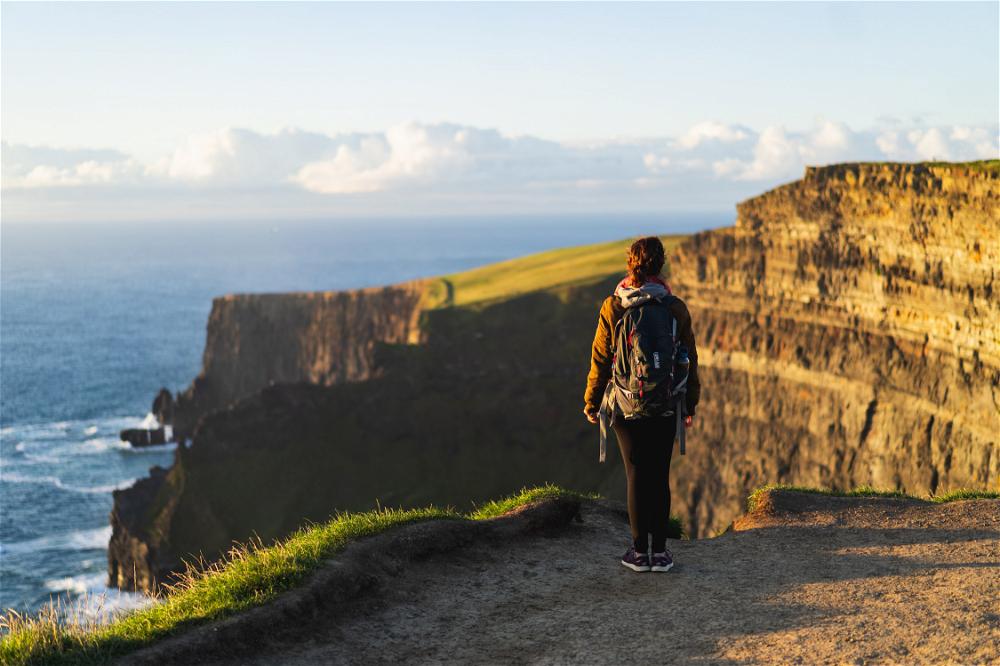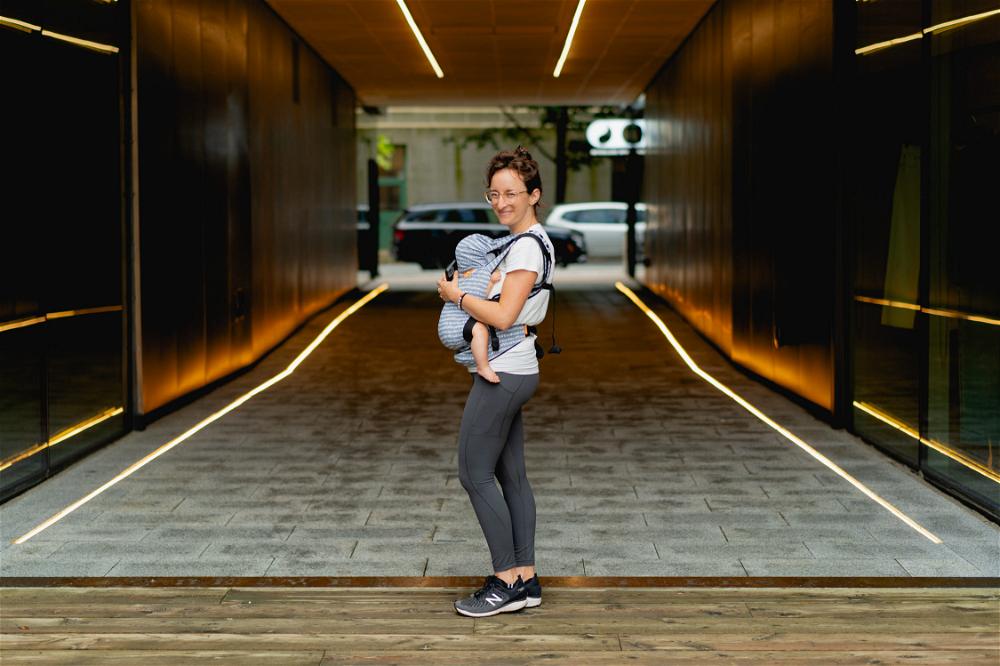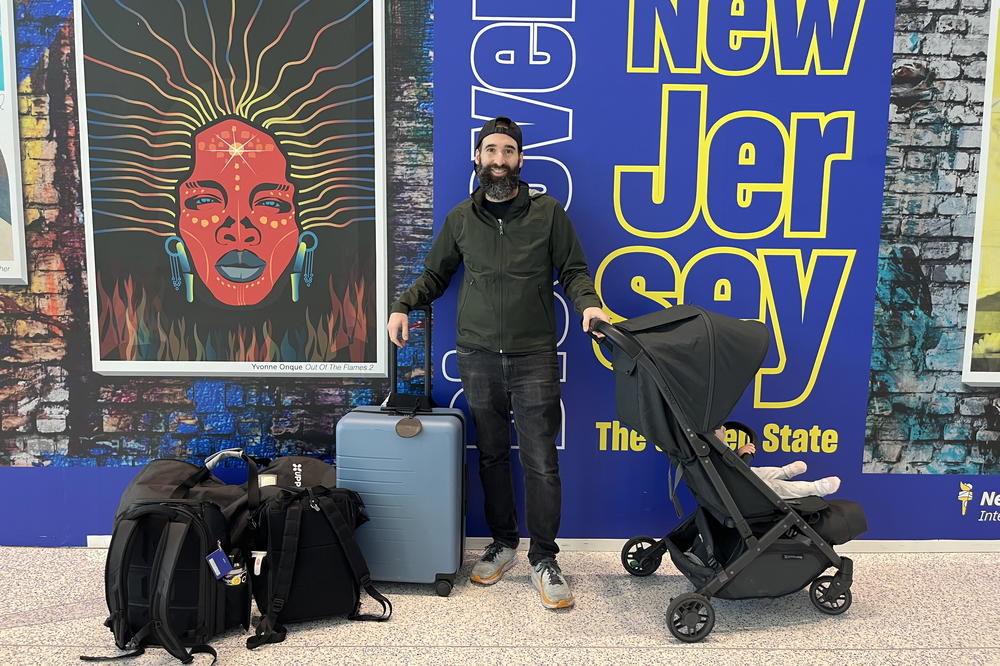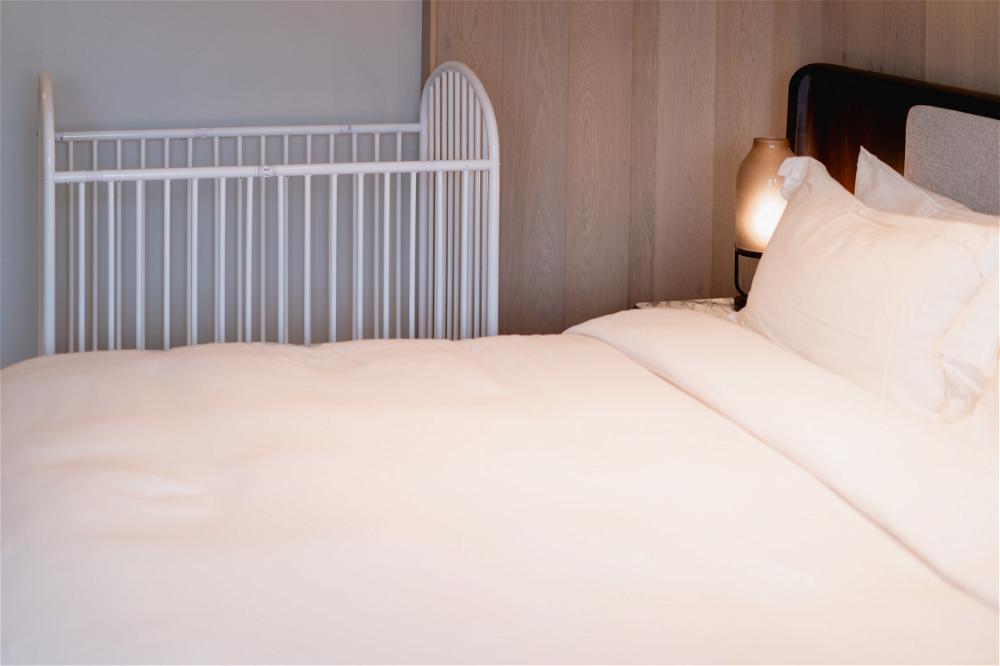How Much Cash to Travel With Internationally: Complete Guide
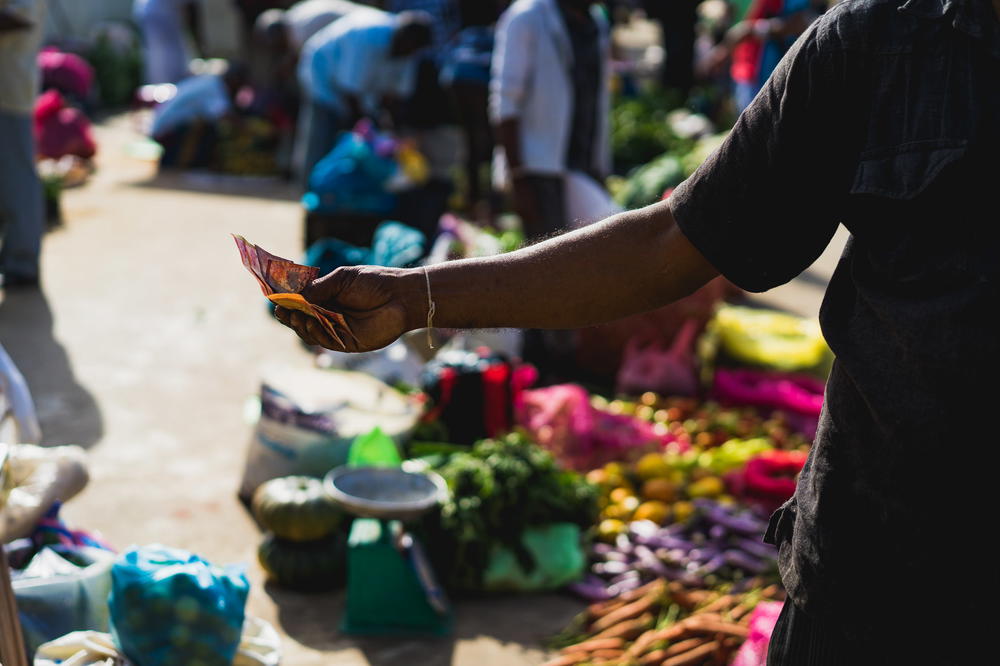
Discover essential travel money tips for international trips. Learn cash limits, currency exchange strategies, and the safest ways to carry money abroad.
This article may contain affiliate links. We earn a small commission when you purchase via those links — at no extra cost to you. It's only us (Becca & Dan) working on this website, so we value your support! Read our privacy policy and learn more about us.
Table of contents
- How much cash should you travel with internationally?
- Best way to travel with money safely
- Find out and track foreign international currency exchange rates
- Get local currency for your international destination before you travel
- Use credit cards as much as you can
- Budget your travel spending during an international trip
- What to do with leftover foreign currency after your trip
- Don’t go over the limit for cash allowances on an international flight
- Travel money tips: Key takeaways
Planning an international trip and wondering about money management? You’re not alone. One of the most common questions travelers ask is: “How much cash should you travel with internationally?”
The answer depends on your destination, travel style, and personal preferences. In this comprehensive guide, we’ll cover everything you need to know about managing money while traveling abroad, including cash limits, currency exchange tips and the safest ways to carry money internationally.
This comes from real experience having traveled through most of our 20s. We can’t wait to share all of our tips with you!
How much cash should you travel with internationally?
The exact amount depends on several factors:
- Your destination’s payment culture. Some countries are largely cashless (like Taiwan and the Netherlands), while others still rely heavily on cash (like Vietnam and Sri Lanka).
- Length of your trip. Longer trips require more cash for daily expenses.
- Your travel style. Depending on what you are doing, a local experience might require cash. Activities through bigger companies usually have some type of platform where it is cashless.
- Emergency situations. Always have backup cash for unexpected expenses.
So the answer is, well, it depends. We always had about $100 in USD that we could exchange if there was an emergency. Because we were traveling as a couple, we had at least 4 different ATM cards that we could use.
We both have 2 different bank accounts (see more about that below) where we can exchange cash for free anywhere.
We would always take out local currency at the airport, enough for a taxi or local transportation and enough for tips or some local convenience store. And we’d top up based on the activities that we were doing a few days in advance. We never had huge wads of cash with us.
For you, I’d recommend estimating the cost per day. That includes food, accommodation and activities. Have a couple of days worth in the local currency and maybe only a day or two as a backup in your home currency (for me, this is USD). I wouldn’t exchange my USD unless I absolutely needed to. The exchange fees are usually pretty bad.
Cash vs. Card Usage by Destination
If you asked me 10 years ago, I would have said cash is used in most parts of the world. Bring a ton of cash if you are traveling.
These days, almost everyone accepts cards, and it’s generally not a problem. We’ve had remote locations in Vietnam swipe our cards without any issues. Sometimes the mountain regions have issues connecting their card readers or it’s down for whatever reason.
That’s why it’s always good to have backup cash.
But even at home, in the NYC area, we’ve also had rare issues where we couldn’t pay with our cards.
Note that in some locations, American Express or some other types of cards aren’t accepted. This is because the merchant fees are high. I’ve seen this with Discover cards, too. It’s a good idea to have multiple credit card options, so you can cover your bases.
Best way to travel with money safely
When carrying cash internationally, safety and mindfulness should be a consideration. Here are some tips to help you navigate the situation.
Split your money across multiple locations
Never keep all your cash in one place. Distribute it across:
- Daily wallet: Small amount for quick expenses.
- Money belt or hidden pocket: Larger amount for emergencies.
- Hotel safe: Backup cash (but don’t forget it!)
- Different luggage: Spread risk across multiple bags.
If you’re going somewhere that is famous for pickpocketing, you can even have a decoy wallet with virtually no cash in there as well. You can read our pickpocketing guide here if you want to learn more about that.
Airport taxi cash strategy
Always bring exact change for airport transportation. Taxi drivers often claim they don’t have change and will round up your fare. You can research typical taxi costs beforehand and bring that exact amount.
We try and take Uber internationally but that’s not always an option. If we do have to pay for a local taxi, it’s pretty funny how everyone takes cash all day long but never has change.
If you take out money at the ATM, make sure to buy something small at a nearby store, like a water, and get change. Also, make sure you know the currency exchange pretty well. It’s easy to shrug off not getting change if you don’t know the currency because the money basically feels like paper.
ATM withdrawal strategy
While ATM fees can add up, they’re often cheaper than losing all of your cash. It could be theft or it could be something else, but it’s kind of like insurance to take out money in smaller increments.
We use the Fidelity Cash Management account and it reimburses all ATM fees, even internationally. We also have the Charles Schwab checking account and there are no ATM fees as well.
Additionally, we only really kept $500 or so in these accounts. If the cards got stolen or something else happened, we wouldn’t be out a ton of money.
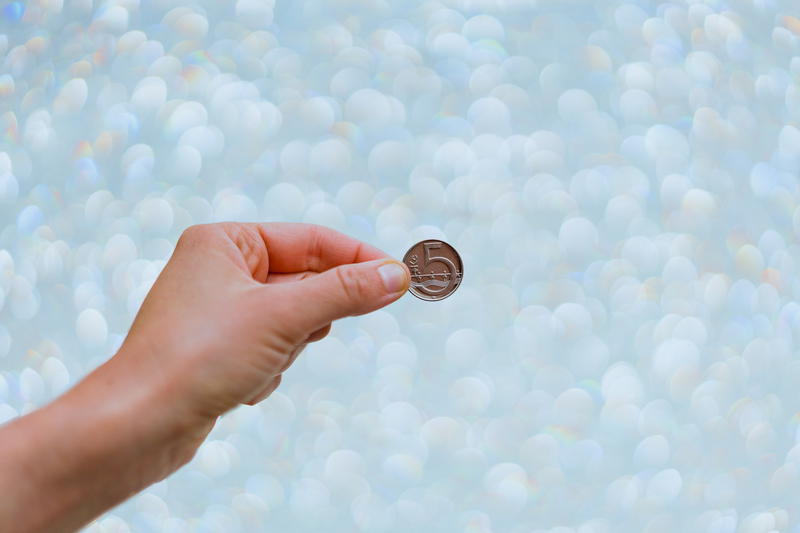
Find out and track foreign international currency exchange rates
I personally think foreign exchange rates are fun and interesting.
Edit: I think it’s fascinating and worthy of keeping in an app in my phone for travel days.
Foreign currency exchange rates are like a gamble of their own, and I find exchange rates and fluctuations over time to be incredible.
We had a good luck streak of going to favorable destinations when the dollar was the strongest in 2016-2018. It’s not always the case and we’ve since seen quite the decline over the years on how far our dollar goes.
Get familiar with exchange rates!
I first had to get familiar with foreign exchange rates when I lived and worked in Shanghai, China, from 2010 to 2012.
While working there, I was paid in US Dollars due to an agreement in past years with American staff hired from abroad.
I worked in China during the first year when the Chinese Yuan started slipping in its rate with the US Dollar, and this hurt my salary.
The Americans who worked at my school and I would race to the bank on Fridays after pay day to request conversions of our USD into Chinese Yuan for spending, as soon as possible.
The catch was that the rate would slip day by day. If we didn’t act fast, we’d lose our hard-earned money to the fluctuation. Some days we’d look at XE.com and admire small increases in the USD to Chinese Yuan, and other days we’d look in disgust at a small dip.
Nowadays, I look at exchange rates when I travel.
There are some places, like Hong Kong, that have currencies pegged to the USD. (Did you know that? Such a fun fact.)
This is interesting as well because, at any given point, you can go to Hong Kong and presume that the rate won’t have changed much (unless something totally unexpected happens).
I follow currency rates around the world so that I can think up places to go where my dollar will go further.
Researching currency fluctuations
When I went to South Africa in summer 2016, I lucked out big time. The following is a story about how a foreign exchange rate can make you a king.
Somewhat fortunately for Americans, the South African Rand weakened a whole lot that year.
This caused our US Dollar to have almost two and a half times more buying power than only two years before for American travelers.
I was eating steak dinners and having South African wine for $25 and having cocktails at restaurants for $4. Had I gone in 2013, that steak dinner would’ve been $75 in my home currency, and the cocktail would’ve been $12, just like in NYC.
Right now, the same thing is happening in Argentina, a place where the economy affects the currency a whole bit.
When I went to Argentina, the exchange was approximately 14 Pesos to a USD, and now it is hard to even pin down how much the Argentine Peso is worth in Dollars because it fluctuates constantly. I recommend checking out Xe.com.
This means Americans have 5 times (more?) of the buying power we did four years ago.
Fun fact: traveling to Argentina will also get you steak dinners, wine and cocktails, so I definitely recommend it. :-)
Track foreign exchange rates over time
To track foreign exchange rates, use XE.com, which you can read about in our favorite apps for travelers article.
I also use the XE.com app for my phone. The mobile app is free, and you can choose nine of your favorite currencies to track against your home currency.
The rates update immediately, and you can also look into the charts that are available to show currency changes over time in one-day to ten-year intervals.
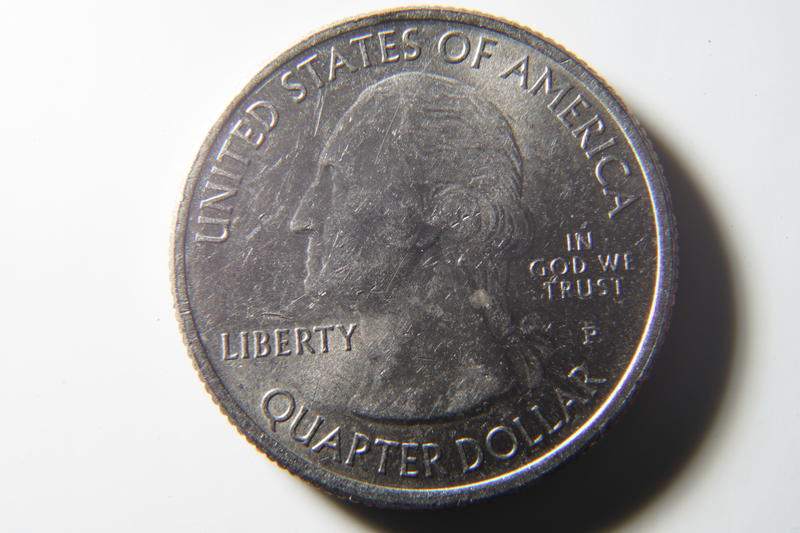
Get local currency for your international destination before you travel
There are several ways to get local currency before you leave for a trip abroad. I’m going to list a few ways that are my favorite hacks of getting international money before my flight.
Ask around in your network for foreign currency
First, you can always ask on Facebook if anyone in your friends network has the currency of where you are headed.
When I went to Portugal (or was it Spain?) in 2016, I posted on Facebook, “Does anyone have Euros they don’t need?”
I got several replies and met up with a friend who had leftover Euros from a previous trip.
I landed in Europe armed with Euros so that I didn’t have to get to an ATM so immediately. I like to land in a new destination abroad already armed with local currency, so that I can take an airport taxi into town or buy some snacks in case (worst case scenario) the ATMs reject my ATM card.
Get foreign currencies at your home bank
A second way to get local currency is to head to a bank and ask if they have Euros, Pesos, Yuan or Yen, etc., in stock.
For currencies that are rarer (Sri Lankan Rupees, Peruvian Soles, Vietnamese Dong… to name a few), your chances are a bit slimmer.
Sometimes, you can request these in advance from a bank and they can let you know how soon they can receive them for you to exchange before you leave.
If you’re going to, say, Guatemala, and you’re looking for Guatemalan Quetzales (the currency there), you could call your local bank branch a month before your flight leaves and ask if they can order the currency for you to pick up and trade.
You can withdraw local currency when you land in the airport or cross over land
The last few ways to get local currency of your destination happen when you land. Upon arrival, you can withdraw from an ATM with your ATM card in the airport.
When withdrawing from ATMs abroad, you will typically get charged a fee by the foreign bank (and maybe your bank as well).
To avoid this, you can use a bank that reimburses foreign ATM fees. I’ll get into this very soon.
Exchange at a bank when you arrive
Although I do not recommend doing this, as per the benefits of the methods mentioned above, you can also exchange your home currency for local currency at a bank when you land.
You may receive a less-than-optimal exchange rate.
If you’re going to be potentially exchanging money at banks abroad, make sure your bills are crisp, clean and undamaged!
Use credit cards as much as you can
Use credit cards whenever possible for international travel. They offer better security, exchange rates and convenience than cash. They can help you with fraud and some offer travel insurance, theft insurance, coverage when you rent cards and more. It’s a ton of stuff you can get from your credit cards.
Why credit cards are better than cash for travel:
- Better exchange rates: You get the daily interbank rate, not tourist exchange rates.
- Security: If stolen, you can cancel the card.
- Purchase protection: Many cards offer travel insurance and purchase protection.
- Rewards: Earn points and miles for future travel.
- No foreign transaction fees: With the right card, you pay no extra fees.
Essential credit card features for international travel:
- Avoid cards with foreign transaction fees: Avoid 3% fees on every purchase.
- Use Visa or Mastercard: They’re generally accepted more place worldwide.
- Travel insurance: Many premium cards include travel protection.
- Emergency assistance: 24/7 customer service for travel issues.
For more details on choosing the right travel credit card, see our guide on travel hacking.
I wanted to stress two things.
- Double check that your card actually has no foreign transaction fees.
- Read the benefits or limitations on your credit card before you leave.
We got a new credit card specifically for travel. It offered a ton of points and we got to fly one way totally for free. But oops, it actually had a foreign transaction fee. We were spending a ton on the card and didn’t even know that 3% was basically getting eaten by the fees.
You can call credit card companies and ask for forgiveness. Or at least forgiveness on some of the biggest fees, like a hotel. I think we ended up only having to pay $10 on the fees. It was a mistake we’ll never do again!
Put an international travel advisory on your credit card account
One of my favorite things to do before I leave for a trip is to call my credit card company, talk to a human, and let them know which countries I’ll be in, so that they do not flag my purchases as fraud and block my usage.
It pays to take care of this beforehand so that you don’t have to deal with issues when you leave your country and may not have a way of making calls.
Nowadays, many credit card companies say, “You don’t have to call us to tell us about a travel advisory anymore!” That’s probably true. We still like calling to give us 100% confidence that our cards will work.
Getting the daily exchange rate on credit purchases while abroad
Spend money on your credit card while you’re on your international trip.
You’ll also get the conversion at the daily exchange rate when your purchase posts.
I use a travel credit card whenever I can, so that I can continue travel hacking and increase my points and miles. This lets me cash in for free flights further down the line when I have enough saved up!
I also find it helpful to review my purchases and spending in an app like the Chase app, so that I can see if there’s anything that was charged incorrectly, any foreign transaction fees I have to know about. Having an app on the go lets me assess my spending while I’m on the road.
Determine the extent of acceptance for different credit card companies
In my experience, Visa and Mastercard are widely accepted worldwide.
American Express and all of the others are accepted outside the US, but it is always best to have multiple credit cards.
Some stores or restaurants may turn away American Express, and if you have multiple types, you’ll have another option ready.
Some businesses might also charge fees for using credit, or may have charge minimums. Be prepared for these kinds of setbacks, and have cash ready as backup as well.
Know your transaction fees on your travel credit card
When using credit, ask the businesses if there is an extra charge for a credit card purchases.
In several hostels and hotels in different parts of the world, I’ve experienced being quoted a 3% transaction fee for using a credit card; this is typical for small businesses, as they aim to offset the costs of using credit in their stores.
Sometimes, I’ll change my mind and use cash, or sometimes I’ll go with the fee if it’s not turning out to be too hefty. If it’s an accommodation, sometimes my credit card might offer 3% cash back on hotels, so the fee nets out to 0.
I have mostly seen this abroad when booking excursions or paying for a night in a hostel.
For this reason, it’s good to have a few hundred dollars worth of local currency with you if for some reason a place does not accept credit at all. An example of this would be a local guesthouse, a cash-only restaurant, a taxi you have to take when there’s no rideshare service available or a bus booking.
Using credit abroad and leaving tips
One more consideration is the use of credit in cafes and restaurants internationally.
In some countries where credit cards are accepted, the tip is not included in your bill and can’t be added after the transaction. It’s a culture thing, if you don’t speak up once they swipe your card, you might actually miss out on being able to leave a tip.
The point of sale terminals have it there but if they are in a language you don’t speak, it can be hard to navigate.
If you want to leave tip on card, you have to remember to tell your server to add 10% or 15% (depending on local norms) as they are processing the transaction.
Choose the local currency correctly and optimally
In my experience, if you have a choice of USD or EUR, for example, when your credit card is in the reader, pick the foreign currency.
You will nearly always get a better deal.
I always avoid choosing US Dollars in these instances, and I’ve even done the math after making the mistake of picking USD that I had lost out.
If you’re unsure, take a quick picture of the exchange rate and check later which currency ends up being a better deal. In our experience, picking the local currency always meant we’d pay less of a currency conversion.
Budget your travel spending during an international trip
Tracking your spending while traveling helps you stay on budget and make informed decisions about future trips.
Daily spending calculation method:
- Track all expenses: Flights, accommodation, food, activities and transportation.
- Calculate daily average: Total trip cost ÷ number of days.
- Identify budget busters: Rental cars, expensive restaurants and tourist traps.
- Adjust as needed: Cut back on expensive items to stay within budget.
Money-saving strategies while traveling:
- Use public transportation: Often cheaper than taxis or rental cars.
- Eat like locals: Street food and local restaurants are usually cheaper. Plus, it’s a more authentic experience.
- Free activities: Walking tours, parks and museums with free days.
- Travel in off-season: Avoid peak tourist times for better prices. There are absolutely pros and cons of this. The pro is things are cheaper and the crowds are less. The cons are things might be closed and the weather might not be as nice.
For more detailed money-saving tips, check out our guide on ways to save money while traveling.
Check out a travel pricing index for destinations abroad
The Price of Travel Index is one of my favorite websites to peruse.
Did you know that Hanoi, Vietnam, ranks #1 for the lowest price of daily travel in Asia?
You can find out that type of data at this site.
We talk about our favorite affordable destinations for travel in this guide.
Calculate spending each day or week during a trip abroad
If I’m traveling for a while, I’ll stop and take some time to calculate how much I’ve spent so far.
I tally the price of my flight or flights (including any airline vouchers used), and then separately, I’ll tally the amounts of money I’ve withdrawn from ATMs, purchases made on credit card and any money spent on the trip before I left (price of foreign travel visas or related fees).
I usually do this for fun and for my own reference in a Google spreadsheet.
Looking for new proven ways to save money on flights and airfare? The easy solution is to sign up for Going, the leading way to find flight deals and mistake fares, directly to your inbox. Use HALFHALF20 to get 20% off!
Figure out your spending average for your trip budget
Based on how I want to calculate my daily spending average, I take these fees and divide by the number of days I’ve been on the road.
What’s interesting to see is how things like rental cars factor into your trip and blow out your daily average.
When Dan and I traveled around Ireland, the cost of our rental car for a week accounted for a giant portion of what we spent during the whole trip.
If you are on a tight budget, consider scrapping a rental car and going with public transport.
There are so many ways to save money during travel.

What to do with leftover foreign currency after your trip
Don’t let unused foreign currency go to waste! Here are smart strategies for handling leftover cash.
My best tip is to not let this happen! If you’ve budgeted, you can sometimes spend the last of your money on a meal (with a nice tip) or a ride to the airport. If you can’t swing it and still have some left over money, try these things.
Spend it at the airport
- Duty-free shopping: Use leftover currency for souvenirs or gifts.
- Airport restaurants: Buy snacks or meals for your flight.
Save for future trips
- Major currencies: Euros, British Pounds, Japanese Yen can be saved for future trips. I mean, really everything can be saved if you plan to go back at some point in your life.
- USD destinations: If you have USD leftover from Ecuador, Panama, or Cambodia, you can use it at home, duh.
- Friend exchanges: Offer currency to friends planning trips to the same destination.
Exchange strategies
- Bank exchanges: Often better rates than airport exchanges. Do this when you get home.
- Peer-to-peer: Use Venmo or PayPal to exchange with other travelers. You can do this before you leave, so you can collect money from them and hand over your cash. I’d be sort of careful in case they do any type of charge back. This is the most risky item on the list.
Save foreign currency for future trips
If you have cash in a widely-used currency like the Euro (used as official currency in 23 countries!), consider saving your EUR for a future trip to any other country in the Euro-using destinations.
You can also save currency for your friends, if you know you have a friend who will be going to a particular destination within a few months!
If you travel somewhere where the USD is the official currency, like Ecuador, Panama or Cambodia… you’re in luck! You can go home with those dollars in your wallet and use them at home, if you’re American.
Of course, if you’re not American, save those USD bills for your next trip to the US. (And come say hi to us in NYC!)
Ask around in your network to offer international money
If you wind up with any foreign currency and you know you might not be going to that specific country for another few years, ask around in your network to determine if any friends or family are headed there soon and might want to buy it off you.
I’ve done some pretty funny street exchanges in giving away my Colombian Pesos or Indian Rupees in exchange for the equivalent in a Venmo payment.
To buy money or transfer money to others travelers, you can use Venmo (for US bank accounts only) or PayPal (used worldwide).
Don’t go over the limit for cash allowances on an international flight
Some people want to ask, “How much money can I travel with on an international flight?”
Know the rules: You usually can’t travel on an international flight with more than $10,000 (US Dollars). If you have that much money, you should probably put it in a bank, or have it invested…
In any case, most customs forms will ask if you’re traveling with more than $10K in USD upon landing. If yes, you will have to declare it. If you only have $9,999, then you should be fine.
Travel money tips: Key takeaways
Managing money while traveling internationally doesn’t have to be complicated. Here’s a summary of the most important points:
Essential travel money tips:
- Carry $200-500 in cash for immediate expenses and emergencies.
- Know the legal limits - declare amounts over $10,000 USD.
- Use credit cards when possible - better rates and security than cash.
- Avoid foreign transaction fees - choose cards and accounts with no fees.
- Split your money - never keep all cash in one place.
- Track your spending - monitor daily costs to stay on budget.
Modern vs. traditional travel money:
Travel money management has evolved dramatically. While travelers checks were common in the past, today’s travelers rely on:
- Contactless payments (Apple Pay, Google Pay and contactless payments with your card)
- Digital wallets and mobile banking
- Fee-free international cards
- ATM fee reimbursement programs
Stay flexible with payment methods:
Some destinations are still cash-heavy (Sri Lanka, Vietnam), while others are nearly cashless (Taiwan, Netherlands). Research your destination’s payment culture and plan accordingly.
Looking for a new travel credit card? Consider the United Explorer card. We have this card! We like it because of the sign-up mileage bonus, Global Entry credit and no annual fee for the first year.
The key is being prepared with multiple payment options and understanding your destination’s financial landscape. With the right preparation, you can travel confidently knowing your money is secure and accessible.
For more money-saving strategies, check out our comprehensive guide on ways to save money while traveling.
✈️ Did our travel tips help?
We share honest, experience-backed advice to help you with smoother trips. If our suggestions saved you time or stress, treating us to a coffee lets us keep researching the next post.
Fuel more travel adviceYou may also like
-
![]()
My 9 Tips to Survive Traveling with Friends (and Stay Friends)
Traveling with friends is way easier than it looks! Here’s my advice to anyone traveling in a group of friends, for what to expect and how to avoid issues.
-
![Woman wearing a backpack looking into the distance at the Cliffs of Moher Ireland]()
9 Minimalist Packing Tips (Smarter Packing and Planning)
How can you start minimalist travel planning and prepping? Here, we teach you our tips and tricks to pack like a minimalist, bring less stuff and choose versatile travel products.
-
![]()
16 Best Family-Friendly Places to Travel in 2025 (from Real Parents)
Looking for vetted vacation ideas for family-friendly trips this year? Look no further than my list of destination ideas from some very travel-savvy parents I know!
-
![]()
How to Baby-proof a Hotel Room or Airbnb (16 Tips)
Can you baby-proof or toddler-proof a hotel room, vacation rental or Airbnb? In these tips, see what I do when we travel so our child stays safe and out of travel on vacation.
-
![]()
16 Smart Tips: How to Pack Light Traveling with a Baby or Toddler
Prep like a minimalist and pack light for your travel with a baby or a toddler. In this list, learn expert tips for eliminating bulk and excess when you pack the family bags for vacation.
-
![A white crib in the corner next to the bed at the Muir Hotel in Halifax.]()
21 Tips for Staying in a Hotel with a Baby (Experienced Parents)
How do you survive staying in a hotel room with a baby? From my experience, I list the top tips and tricks for sharing a hotel room with an infant on a vacation.

